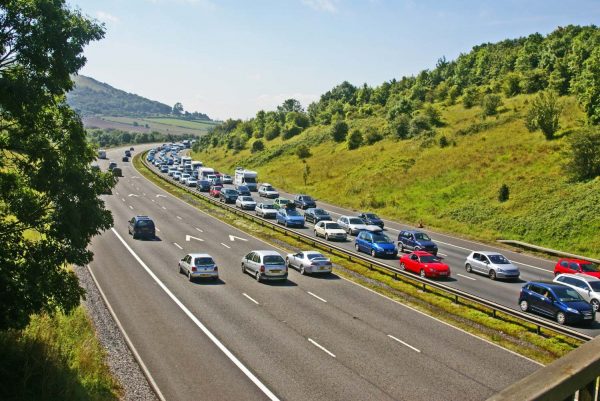Learners on motorways
Learner drivers will be allowed on motorways – this is common sense as driving on a motorway requires a different set of skills for merging at speed from a slip road, anticipating traffic on both sides of the vehicle, dealing with contraflow systems and more. Not allowing learners to drive on a motorway limits their experience and increases the risk. They must do it, however, in a car with dual controls and be accompanied by an ADI.

Getting experience on both busy and free-flowing motorways will be valuable for learners
Some manoeuvres will be replaced
Reverse around the corner and turn in the road (three-point turn) will be replaced with driving into and reversing out of a parking bay as this is a skill more frequently required.
20 minutes of independent driving
Increasing the independent driving section of the test from 10 to 20 minutes to give examiners more time to accurately judge your driving skills in real-world conditions.
Sat nav driving
Asking you to program and follow satellite navigation instructions without doing so blindly. As most drivers will be using a sat nav either built into their car or on their smartphone, this ensures they are equipped to do so safely and to observe the road before taking the guidance of the sat nav (just in case it’s wrong).
Safety questions while driving
Asking one of the two vehicle safety questions while you’re driving. For example, asking you to clean your windscreen or turn on the heated rear window so that they can assess your ability to multi-task.
120 hours of practical driving
In New South Wales, Australia, learner drivers must keep a log book for 120 hours of driving, and the UK government is considering implementing the same. It’s technically possible to pass your test with just a few hours’ experience, and this will ensure that drivers have a good amount of driving experience before being let loose with a full licence. There isn’t a proposal for a graduated driver licence like in Australia, though (graduated driver licences include a theory test, then a period of learner driving with another driver, a test then a period of restricted driving, and finally another test then a full licence).
Dangerous drivers to go to jail for life
The average jail time for drivers causing death due to careless or dangerous driving is under four years and making it a life sentence is the equivalent of a murder charge, rather than a manslaughter charge which could be as little as four years (but can be as much as life).
When will the above proposals happen?
Many of these are expected to come into effect during 2017.
